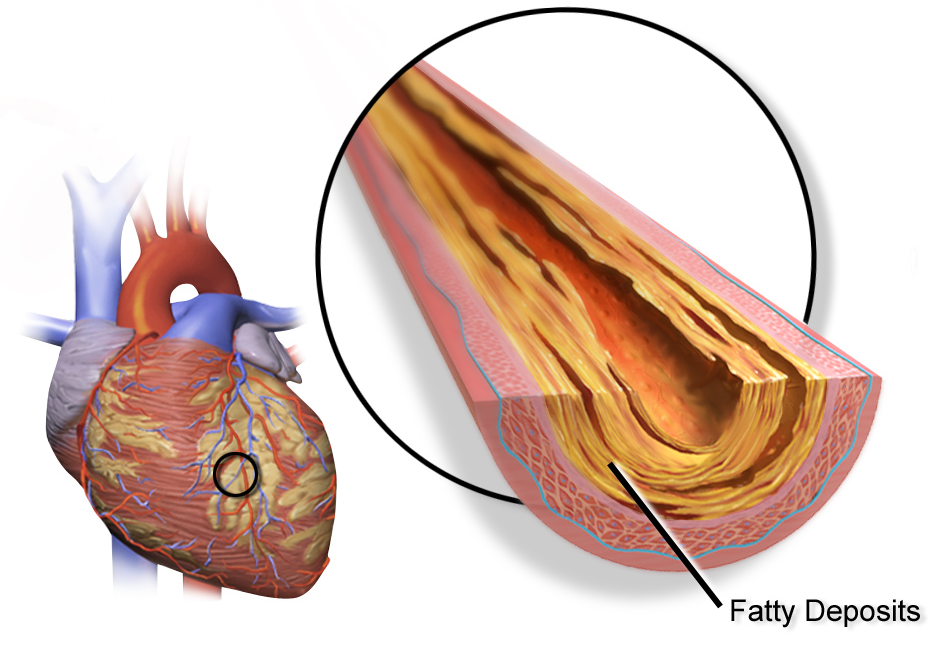 |
| Plaque build-up in the arteries reduces blood flow, and hence oxygenation. An association with visual impairment argues for greater intervention by optometrists. Photo: Blausen.com staff (2014)/WikiJournal of Medicine. Click image to enlarge. |
Hypertension and diabetes are known risk factors of coronary heart disease (CHD). With more studies reporting health disparities in people with visual impairment (VI), researchers recently investigated these risk factors and others in CHD patients to see if there is a connection with VI.
A total of 1,335 visually impaired adults ages 45 and older were evaluated. The team found the risk of CHD in middle-aged and elderly patients with VI is 11.5%, which increased with age. Risk factors of CHD included hypertension, diabetes, degree of visual impairment and physical exercise level in those aged 45 and older, which is consistent with previous studies. New risk factors include poorer vision degree and resting heart rate below 60 beats a minute.
“Our findings suggest that a heart rate <60 may increase the risk of CHD in people with VI, which may be related to the early stages of CHD and the absence of heart failure in the study population,” the authors noted.
The BMI of subjects with CHD was significantly higher in those 65 and older. “The association between BMI and coronary risk is mostly mediated through its adverse effects on other major cardiovascular risk factors, mainly diabetes, blood pressure and lipids—which explains that in the elderly group, obese people with VI have a higher risk of CHD compared with those with normal weight,” the authors explained. “These findings indicate that effective control of body weight is crucial for the early prevention of CHD in patients with VI.”
Existing studies have confirmed that visually impaired patients have a high incidence of cardiovascular disease; however, there is no concrete evidence that the risk of cardiovascular disease is measured in terms of the degree of visual disability.
“The results of this study emphasize the importance of early recognition of CHD in patients with VI and provide a new basis for the prevention of CHD” in such patients, the study authors concluded.
Overall, improvements in coronary heart disease prevention and management among people with visual impairment may require a targeted approach that incorporates both demographical and clinical characteristics, they suggested.
Qin S, Huang L, Zhou J, et al. Prevalence and related risk factors associated with coronary heart disease (CHD) among middle-aged and elderly patients with vision impairment (VI). Int J Gen Med. 2021;14:6125-33. |

